What is a Winter Storm?
A winter storm is a combination of heavy snowfall, blowing snow and/or dangerous wind chills, which could be life-threatening. A major winter storm can last for several days and be accompanied by high winds, freezing rains or sleet, heavy snowfall, and cold temperatures.
How to stay informed?
- The National Weather Service (NWS) provides alerts and warnings for all hazards through a National Oceanic and Atmospheric Administration (NOAA) Weather Radio (NWR) receiver. There are radio receivers that are designed to work with external notification devices for people who are deaf or hard of hearing.
- Download the Federal Emergency Management Agency (FEMA) and American Red Cross apps on iOS or Android at no cost. These apps may provide information about finding shelters, providing first aid, and seeking assistance for recovery. Search for the FEMA (https://play.google.com/ store/apps/details?id=gov.fema.mobile.android&hl=en) or American Red Cross apps on your smartphone or other mobile devices.
How to understand winter watches and warnings?
- It’s important to learn the differences between Advisories, Watches, and Warnings, which describe changing winter weather conditions in USA. Learning what these terms mean can help us understand how an approaching storm may impact you and what actions need to be taken to ensure safety. Winter Weather related Advisories, Watches, and Warnings are issued by your local National Weather Service office and are based upon local criteria.

- Further, In Canada when a severe storm is on the horizon, Environment Canada issues weather warnings through the Weatheroffice website, automated telephone information lines and its “Weatheradio” service. Radio and television stations also broadcast Environment Canada weather statements.
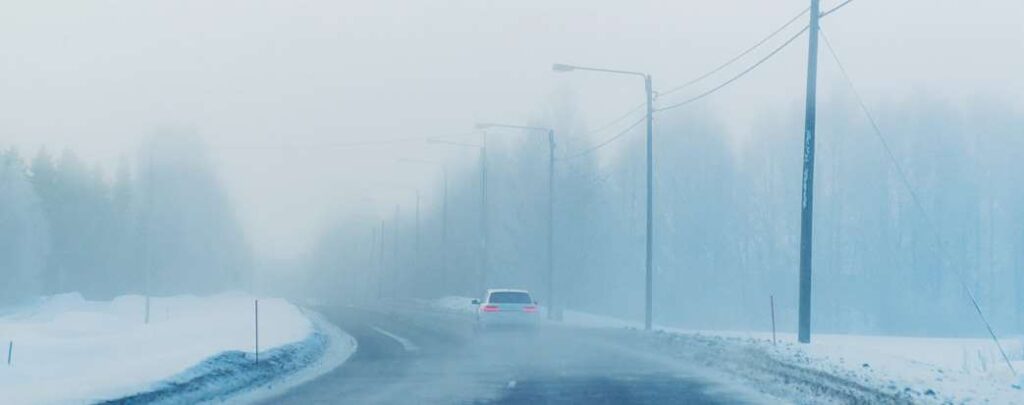
Recent Winter Storms in the US and Canada
A wide range of severe weather events due to a series of winter storms were recorded across the US in February and the first week of March 2023, while Canada also experienced winter storms during this period. These severe weather events were driven by a large winter storm that hit parts of Northwest US early 20 February, gradually moving towards California and the Southwest, even as it moved east. A variety of hazards including heavy snowfall, freezing rainfall, severe thunderstorms and tornadoes were witnessed across these regions, with typically warm areas such as Southern California recording its first blizzard warning since 1989, as it began to be affected by the winter storm from 23 February onwards. Tornadoes were also reported in Texas, Louisiana, Kentucky, Kansas and Oklahoma, resulting in severe damages. Meanwhile, Southern California’s San Bernardino County alone recorded 13 deaths due to strong winter storms in the area, while several other casualties were also reported from states such as Kentucky, Tennessee, Alabama etc. The severe weather system also affected large parts of Canada, including Toronto, Metro Vancouver, Montreal, Calgary etc. with some areas recording snow accumulations as high as 50 cm.
Due to the winter storms, the California Highway Patrol shut Interstate 05, which is the longest interstate highway in the state, diverting heavier traffic to Highway 101. Almost thousands of flight cancellations were reported across the US due to the severe weather conditions, while millions were without power across the affected areas due to damages caused by the winter storms. Flight cancellations and power outages due to the winter storms were also reported across Canada, while winter weather travel advisories were also issued warning of hazardous driving conditions until at least Saturday (18 March).
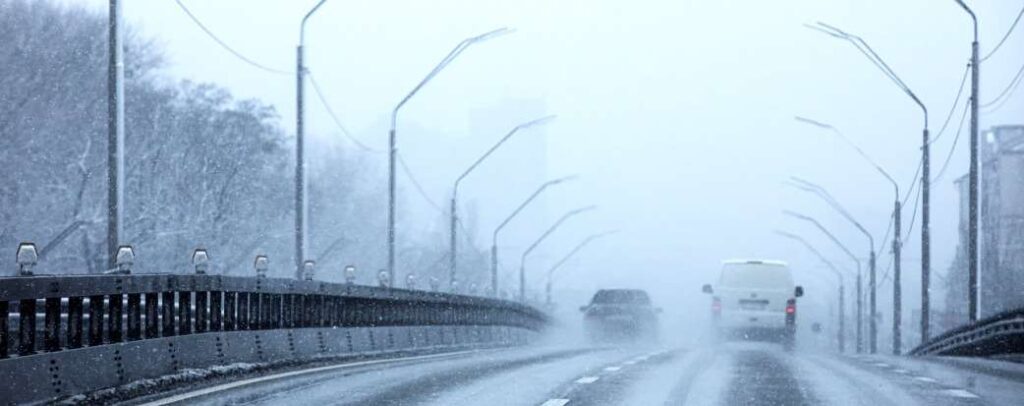
Forecast
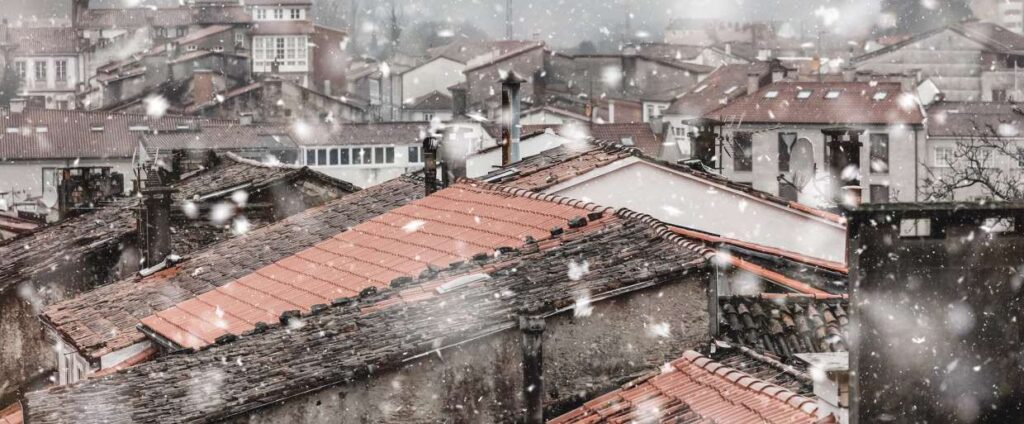
- The National Weather Service (NWS) is predicting winter storms and atmospheric river events to continue on the West Coast till Thursday (23 March). Potential flooding and mudslides due to heavy rainfall, melting snowpack, saturated soils and swollen streams can be expected.
- Heavy rainfall can be expected across southeast Wisconsin on Thursday (16 March), while strong wind gusts of between 30-40 mph are likely to continue until Saturday (18 March).
- The NWS is predicting a front from the Upper Mississippi Valley to move eastward into the Great Lakes southward to the Central Gulf Coast by Friday (17 March), producing snowfall over parts of the Northern Intermountain Region, Great Basin, and Northern Rockies. Localized freezing rainfall is expected over portions of the Middle Missouri Valley till Friday (17 March).
- Heavy rainfall due to thunderstorms may led to a slight risk of excessive rainfall over parts of the Southern Plains/ Lower Mississippi Valley till Friday (17 March) morning, causing localized flash flooding. Strong wind gusts, frequent lightning, about two-inches of hail and a few tornadoes are also being predicted during these storms.
- The NWS Storm Predicting Center warned of a slight risk of excessive rainfall across southern Arkansas, eastern Texas, and central and northern Louisiana until Friday (17 March), while a marginal risk of excessive rainfall exists across much of the rest of affected area till Saturday (18 March).
- A slight risk of severe thunderstorms, with possible tornadoes, also exists for parts of southeastern Louisiana, southern Mississippi, southern Alabama, and Florida Panhandle until Saturday (18 March).
- Meanwhile, Environment Canada predicts heavy snowfall of between five to 10 cm and localized blowing snow, along with strong northeasterly wind gusts until Friday (17 March) over northern Ontario.
Impact of Winter Storms
- The winter weather will likely cause ground and air transport disruptions. Traffic and commercial trucking delays are possible along regional highways.
- Dangerous and challenging driving conditions are also likely on secondary and rural roads in the affected states as maintenance crews prioritize clearing major routes.
- Authorities could close stretches of highways if driving conditions become too hazardous.
- Flight delays and cancellations are possible due to ground stops and deicing operations at regional airports.
- Sporadic power outages could occur throughout the affected area.
Relief Measures
- On 27 February, a local emergency was declared by the San Bernardino County officials in San Bernardino County, one of the most affected counties, after several mountain residents were trapped at home or unable to reach home following several feet of snowfall. The declaration sought state and federal assistance to clear the snow from mountain highways and streets. On 01 March, Governor of California declared a state of emergency to support and fund disaster response and relief measures in San Bernardino County and a dozen other counties. The governor also activated the State Operations Centre to mobilize higher level support to county-led emergency response efforts as well as to coordinate mutual aid from neighbouring jurisdictions.
- American Red Cross and San Bernardino County officials established an emergency shelter and resource centre at Redlands East Valley High School for mountain residents of San Bernardino County who were unable to reach home. Further, San Bernardino County Fire Department used specialized snow vehicles during the storms to reach patients in medical need.

- On 08 March, Governor of California declared a state of emergency in 21 additional counties to help them prepare for a severe winter storm. Under the emergency measures, the state government was authorized to use all the available resources to help the residents affected by the storms. The emergency was aimed at aiding disaster response and relief measures in 21 counties, including San Francisco, Monterey, Santa Clara, and Santa Cruz counties.
- US President Joe Biden approved a state of emergency in California on 10 March to supplement state, tribal and local response efforts, with the region being affected by a series of winter storms., resulting in flooding, land and mudslides. Under the emergency, the US Department of Homeland Security and Federal Emergency Management Agency (FEMA) were authorized to coordinate all disaster relief efforts as well as to provide appropriate assistance for the required emergency measures.
- FEMA was given the authorization to identify, mobilize and provide all the necessary equipment and resources to deal with the emergency conditions.
- On 12 March, the Governor of California declared a state of emergency in six additional counties, including Calaveras, Del Norte, Glenn, Kings, San Joaquin and San Benito, to support storm response and relief measures.
- CAL Fire and partner agencies deployed crews, including from California National Guard, California Conservation Corps, and California Department of Corrections and Rehabilitation, along with two helicopters, two dozers and an Incident Management Team.
- The California National Guard pre-positioned its High Water Vehicles and aircraft to respond to flood operations.
- California Department of Transportation and California Highway Patrol also deployed its crew members and other resources to deal with snow removal efforts and to ensure safe delivery of essential items during the storms.
- A state of emergency was also declared in the state of Kentucky on 24 February due to the heavy rainfall, flooding and landslides that affected several communities across the state during the storms. The governor also activated Kentucky’s price gouging laws with an aim to protect residents dealing with storm damage from predatory pricing of goods and services.
- The Governor of Texas directed the Texas Division of Emergency Management (TDEM) to send specialized teams throughout the state to work with the utility providers and electricity cooperatives to assess infrastructure damages and to detect potential opportunities for disaster assistance. The governor also urged residents to report storm damages to homes and businesses on the Individual State of Texas Assessment Tool (iSTAT), to recognize resource needs as well as the measure extent of damage caused by the storms.
- On 10 March, the Governor of Nevada also declared a state of emergency in the northern Nevada counties of Douglas, Lyon and Churchill, to deal with flooding caused by the storms. On 11 March, additional counties were brought under the emergency declaration as severe weather conditions continued to impact the state. The emergency will help the affected counties to receive state and federal assistance to deal with damages caused by the storms.
- Due to the series of winter storms in California and the Southeast, the Internal Revenue Service (IRS) announced a further extension of tax deadline from 15 May to 16 October, 2023, for residents in most California counties, as well as those in parts of Alabama and Georgia.
- Meanwhile, authorities across Canada, including in Toronto, deployed snow clearing vehicles such as snowplows and salters to clear the highways and streets of piling snow from the winter storms. Ontario Provincial Police responded to crashes throughout the region due to heavy snowfall, including a five-vehicle crash on Highway 401 near Milton, west of Toronto.
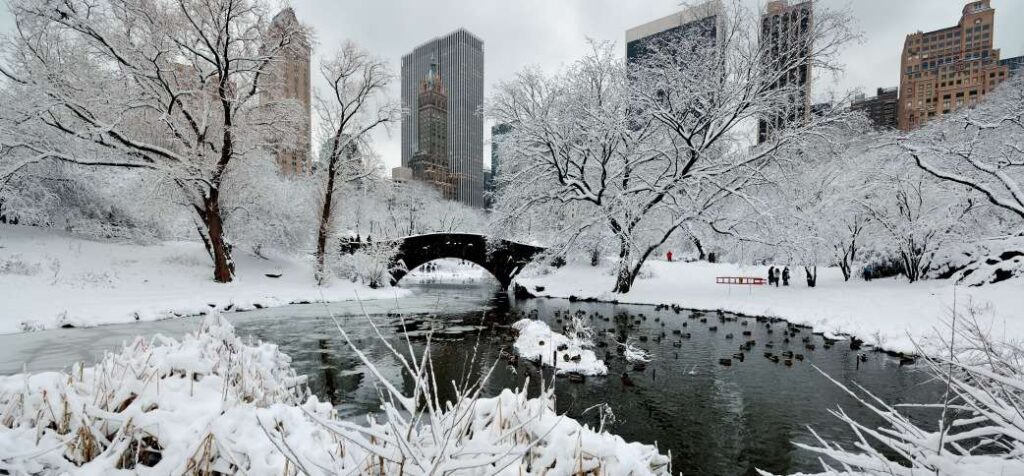
How to Prepare for a Winter Storm?
Winter storms can cause power outages that last for days. They can make roads and walkways extremely dangerous and also negatively affect critical community services including public transportation, childcare, and health programs. Injuries and deaths may occur from exposure, dangerous road conditions, carbon monoxide poisoning, and other winter storm conditions.
Before Winter Storm
- Be informed by receiving alerts, warnings, and public safety information before, during, and after emergencies.
- Create and review your family emergency plan. If you receive dialysis, medical treatments or home health care services, work with your medical provider to determine how to maintain care and service if you are unable to leave your home for a period of time.
- Assemble an emergency kit. Add seasonal supplies to your emergency kit, such as extra winter clothing and blankets.
- Follow instructions from public safety officials.
- Prepare for possible power outages. Fully charge your cellphone, laptop, and other electronic devices before a storm if power outages are expected. Consider purchasing a generator to provide power during an outage. Follow the manufacturer’s instructions and learn how to use it safely before an outage.
- Ensure your smoke and carbon monoxide alarms are working and have fresh batteries.
- Make sure your home is properly insulated. Caulk and weather-strip doors and windows to keep cold air out. Install storm windows or cover windows with plastic from the inside to provide insulation.
- Ensure you have sufficient heating fuel and consider safe backup heating options such as fireplaces or woodstoves.
- Ensure your vehicle is ready for safe winter driving. Keep the gas tank at least half-full and have a Winter Emergency Car Kit in the trunk.

During a Winter Storm
- Stay indoors and off the roads. If you must drive, keep emergency supplies in your car.
- Close off rooms to consolidate and retain heat.
- Dress in layers, and use blankets to stay warm.
- Bring pets into a warm place and out of the storm or severe cold.
- Never use a generator, camp stove, charcoal grill, or gasoline or propane heater indoors, as these items can start accidental fires, cause electric shock, and/or cause deadly carbon monoxide poisoning.
- Never heat a home with a cooktop or oven.
- Limit your time outdoors, and stay dry.
After a Winter Storm
- Continue to monitor media for emergency information.
- Follow instructions from public safety officials.
- Call 9-1-1 to report emergencies, including downed power lines and gas leaks.
- Check with your local authorities or call 2-1-1 to find locations of warming centers or shelters near you or for other storm-related questions.
- In the event of power outages during cold weather, you may need to go to a warming center or emergency shelter to stay warm. Report power outages to your utility company.
- Use caution and take frequent breaks when shoveling snow to prevent overexertion. Overexertion can bring on a heart attack—a major cause of death in the winter.
- Clear snow from the sidewalk on your property including nearby curb cuts to allow access for wheelchair users. Regulations and requirements for homeowners and business to clear sidewalks vary by community, but even if not required, please clear sidewalks to make safe travel for all.
At Workplace
- Create a plan in place for those employees who are exposed to the weather for part or all of their workday. Creating a plan for the cold months will help mitigate incidents and empower employees to react quickly if a problem arises.
- Keep a winter emergency supply kit in the workplace could include: flashlight, shovel, extra batteries, jumper cables, foil/wool blankets, snow brush etc.
- Keep walkways and parking lots as clear of snow and ice as possible by using de-icer immediately following a storm.
- Employees should wear proper footwear that is not only well-insulated and water-resistant, but that also has thick, rubber soles with good treads.
- If working on icy walking surfaces is unavoidable, or likely, slip-on metal cleats may be a good footwear accessory to consider.
- For work that is necessarily outdoors, provide a break area that is out of the wind and warmed, so workers can seek refuge from the cold and recover.
Travelling
- Do not travel in low visibility conditions.
- Avoid traveling on ice-covered roads, overpasses, and bridges.
- If you are driving and begin to skid, remain calm, ease your foot off the gas and turn your wheels in the direction you want the front of the car to go. If you have an antilock braking system (ABS), apply steady pressure to the brake pedal. Never pump the brakes on an ABS equipped vehicle.
- Avoid pouring water on windshield to remove ice or snow as this can cause windshield to crack.
- If you must travel by car, use tire chains to prevent skidding.
- Always carry extra warm clothing and blankets and do not rely on a car to provide enough heat as the car could break down.
- Check and restock winter emergency supplies in your car before leaving.
Stranded in a Vehicle
- Tie a brightly coloured cloth to the antenna as a signal to rescuers and raise the hood of the car if it is not snowing.
- Wrap your entire body, including your head, in extra clothing, blankets, or newspapers.
- Stay awake to be less vulnerable to cold-related health problems.
- Run the motor and heater of the vehicle for about 10 minutes per hour,opening one window slightly to let in fresh air.
- Clear snow from the exhaust pipe to avoid gas poisoning.
- Keep moving your arms and legs as you sit to improve your circulation andstay warm.
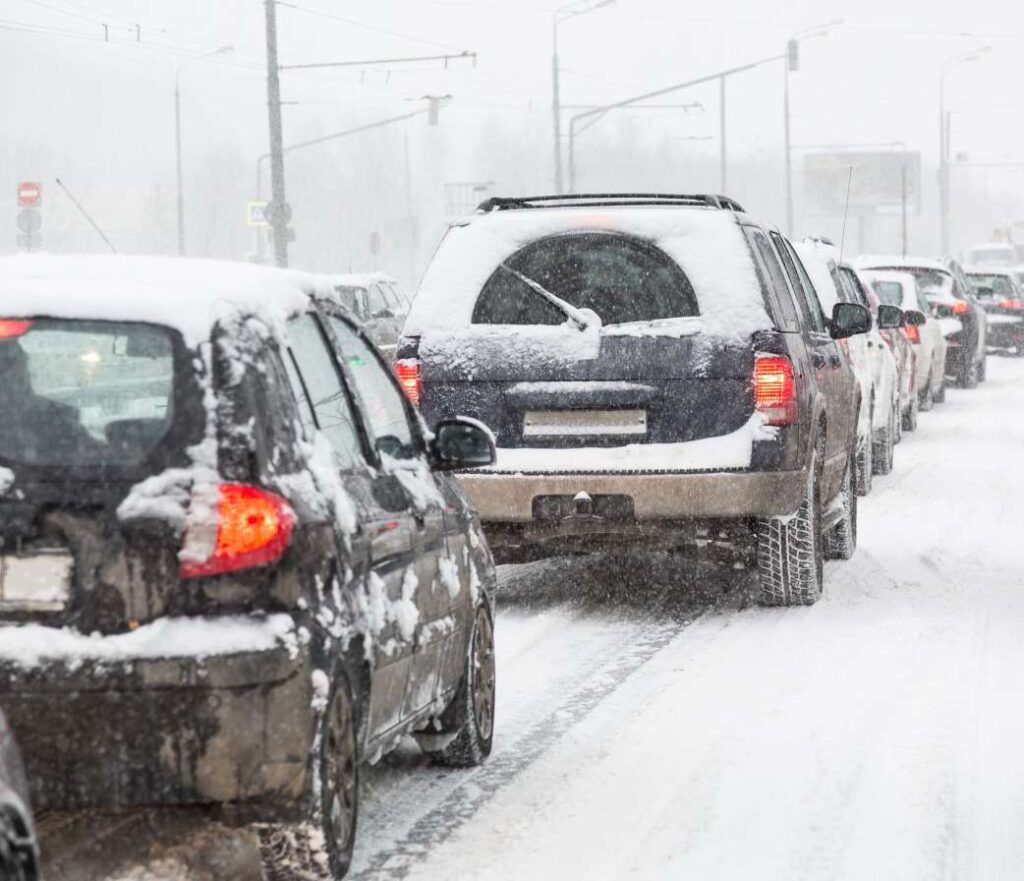
Resources
The following resources and websites can help you further prepare for, respond to, and recover from a winter storm.
In USA
- The nationwide emergency number in the US is 911.
- FEMA Mobile App: fema.gov/mobile-app
- FEMA Winter Weather: www.ready.gov/winter-weather American
- Red Cross Flood Safety: http://www.redcross.org/get-help/preparefor-emergencies/types-of-emergencies/floodor 1-800-733-2727
- Federal Emergency Management Agency (FEMA): www.fema.gov
- National Oceanic and Atmospheric Administration (NOAA): www.noaa.gov
- U . S . C e n t e r s f o r D i s e a s e C o n t r o l a n d P r e v e n t i o n ( C D C ) :http://emergency.cdc.gov/winter/index.asp
- U . S . F i r e A d m i n i s t r a t i o n W i n t e r F i r e S a f e t y ( U S F A ) :www.usfa.fema.gov/winter
- American Red Cross Disaster Distress Helpline for free 24/7 support can be reached by calling 800-985-5990or by texting TALKWITHUSto 66746.
- Fastest way to apply for FEMA’s disaster assistance is by visiting the link DisasterAssistance.gov or by calling n Canada.
- To report power outages in the house or in the neighbourhood to Pacific Gas and Electric Company (PG&E), call 24/7 Power Outage Information Centre at 1-800-743-5002.
In Canada
- The nationwide emergency number in Canada is 911.
- Canadian Red Cross – www.redcross.ca or 1-800-418-1111.
- Environment Canada – 1-833-517-0376.
- St. John Ambulance – www.sja.ca or 1-800- 706-6660.

Recommendations:
- Monitor local media for updated weather information.
- Verify road conditions before driving in areas where heavy snowfall is forecast.
- Allow extra time to reach destinations in these areas and carry an emergency kit and warm clothes if driving is necessary, especially on secondary or rural routes that could become impassable.
- If routing shipments by truck through the affected area, plan accordingly for delivery delays.
- Confirm flights schedule in advance.
- Create an emergency plan: Develop a plan for responding to severe winter weather, including a list of emergency contacts, procedures for closing the workplace and alerting employees, and instructions for dealing with any hazardous conditions.
- Prepare for power outages: Have a backup plan in place if the power goes out. Make sure you have enough supplies, such as flashlights and batteries, to ensure that employees can work safely.
- Plan for transportation: Determine how employees will get to and from work if roads are impassable. Ask employees to plan ahead and be prepared for potential delays.
- Maintain communication: Establish a system for keeping employees informed of changes in the workplace and any potential delays or disruptions.


